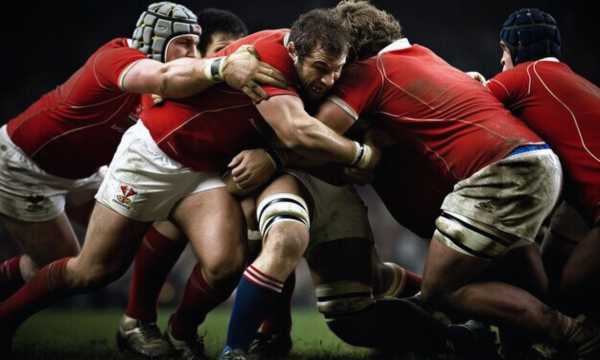Rugby Positions: Understanding the Functions and Skills of Players
Knowing the positioning of rugby players is essential to understanding this fascinating sport that combines strength, strategy and skill in a unique team game.
Ad
Rugby is a complex sport where each position has very specific and complementary responsibilities.
Knowing rugby the placements of each member not only enriches your experience as a spectator but also helps you appreciate the tactical nuances of matches.
Let’s get to know this universe better, from the skills of forwards to the speedy backs.
1. Understanding the Forwards vs. Backs Division
Rugby positions are fundamentally divided into two major groups: forwards and backs.

Rugby Player Position (Google Source)
See how it works:
- Forwards wear jerseys numbered 1 to 8 and are generally the strongest and heaviest athletes on the team. They’re responsible for gaining and maintaining possession through physical contact and formations like scrums and lineouts.
- Meanwhile, backs wear jerseys 9 to 15 and are typically lighter, more agile, and faster. They focus on ball distribution creating plays, and finishing tries.
This basic division of positions reflects the philosophy of the sport which is: you must win the ball before you can attack with it.
Each group has distinct physical and technical characteristics that complement each other perfectly on the field.
Understanding this dynamic between forwards and backs is the first step to appreciating how different rugby positions work together to achieve a common goal.
2. Detailing the Forwards (Players 1 to 8)
Brute Force and Technique
In rugby, the front row is formed by the props (1 and 3) and the hooker (2).
Props are true anchors of the scrum, combining extraordinary strength with refined technique.
They support tons of pressure during the scrum while maintaining correct posture.
The hooker, positioned between the props, has the mission of winning the ball with their feet during the scrum.
Additionally, they are primarily responsible for throwing the ball in lineouts.
These 3 placements in Rugby equire not just brute force, but also excellent scrum technique and great physical endurance.
They are specialists in contact play and form the solid base for all conquest plays.
The Lineout Giants
Second-row players occupy positions numbers 4 and 5, typically being the tallest players on the team.
Their impressive height is essential for winning the ball in lineouts, where they’re lifted by teammates.
These “giants” provide additional power to the scrum, pushing behind the front row and transferring force forward.
These rugby positions require a unique balance between height, strength, and mobility.
Second-row players actively participate in ruck and maul phases, as well as being efficient ball carriers in short plays.
Dynamic Positioning
The back row completes the forwards with three extremely versatile positions: flankers (6 and 7) and the number eight (8).
Flankers are true defensive predators, specializing in tackles and contesting the ball on the ground.
The number eight controls the ball at the base of the scrum and makes crucial decisions about when to release it.
These positions combine the strength of forwards with greater mobility, functioning as a bridge between forwards and backs.
Back row players are frequently those who accumulate the most statistics for tackles, turnovers won, and meters gained.
This combination of strength, speed, and endurance makes these athletes fundamental pieces in both attack and defense.
3. Detailing the Defense- (Players 9 to 15)
Setting Rhythm and Strategy
The scrum-half (9) and fly-half (10) occupy rugby positions that function as the tactical brain of the team.
The scrum-half connects forwards and backs, removing the ball from formations and deciding how to distribute it.
The fly-half receives these passes and orchestrates the attack, choosing whether to kick, pass, or run with the ball.
The scrum-half must be agile and precise. The fly-half needs excellent kicking and the ability to spot gaps in the opposing defense.
The 9-10 duo controls the pace of the match, accelerating when there’s an offensive advantage or slowing down to reorganize the team.
Center Defenders
Centers occupy positions number 12 (inside center) and 13 (outside center), forming a crucial defensive barrier in the middle of the field.
These players combine physical power for decisive tackles with the ability to create offensive plays.
The inside center generally has a more physical profile, serving as a second distribution option after the fly-half. The outside center tends to be faster and more skillful.
These rugby positions are fundamental for creating space in the opposing defense through powerful runs or precise passes to the wings.
Centers need to make split-second decisions about when to pass, when to kick, or when to directly attack the defensive line.
They form the perfect balance between the strategic game of half-backs and the speed of the wings.
Speed, Finishing and Safety
The wings (11 and 14) and fullback (15) occupy positions that prioritize speed, agility, and finishing ability.
Wings are the main finishers, using their power to score tries at the edges of the field. The fullback is the last defender, specializing in receiving kicks and coordinating counterattacks.
These athletes need to combine speed with excellent positioning and the ability to play well in space.
The fullback must have keen peripheral vision and precise kicks to relieve pressure when necessary. Wings need explosive acceleration to overcome defenders in tight spaces.
4. Essential Skills For Each Rugby Position
Each rugby position demands a specific set of skills and physical attributes for efficient performance.

Scrum techniques (Google Source)
Forwards need to master scrum, lineout, and maul techniques, as well as being strong in physical contacts and rucks.
Backs need precise passes, strategic kicks, and the ability to create and exploit spaces in the opposing defense.
All these positions share fundamental requirements like efficient tackling and constant communication.
The modern nature of this sport has raised the demands for all rugby positions, with players becoming increasingly well-rounded.
Even forwards now need good handling skills, while backs must be competent in physical contacts.
The ability to read the game and make quick decisions is valued in all positions on the field today. Flexibility to perform in different roles has also become an important differential.
5. How Positions Interact With Each Other
The beauty of rugby lies in the interdependence between all positions, creating true teamwork on the field.
Forwards win possession through formations like scrums and lineouts, creating the platform for attack.
The scrum-half functions as a bridge, connecting forwards and backs by distributing the won ball.
The attack line formed by different rugby positions works in synchrony to create and exploit spaces in the opposing defense.
Rugby positions never operate in isolation, but rather as part of a coordinated system. When a forward makes a break, they need immediate support from teammates to maintain possession.
The backs depend on the quality of ball won by the forwards to execute their plays. Defense requires perfect alignment between all positions on the field, with constant communication for adjustments.
It’s precisely this interdependence that makes rugby so fascinating, with each position contributing their specific talents to the common goal.
6. The Best Players in Each Rugby Position
In the front row, figures like Owen Franks and Tendai “Beast” Mtawarira revolutionized what props can do beyond the scrum.
Among second-rows, Brodie Retallick and Maro Itoje demonstrated how these rugby positions can influence all aspects of the game.
In the back row, Richie McCaw and Sergio Parisse exemplify the evolution of these positions into complete athletes.
Among backs, players like Aaron Smith (9), Dan Carter (10), Brian O’Driscoll (13), and Cheslin Kolbe (14) redefined their respective positions.
These athletes transcended traditional expectations for their rugby positions, establishing new parameters of excellence.
They combine refined technical skills with tactical intelligence and leadership on the field.
Conclusion
Understanding rugby positions is fundamental to fully appreciating the complexity and beauty of this sport.
Each position has its unique role within the collective system, contributing specific skills to the common goal.
These positions reflect the inclusive philosophy of the sport, where there’s a place for different physical types and abilities.
Regardless of the position you play or admire, each offers unique challenges and opportunities to shine within the collective context.
The next time you watch a match, observe how different rugby positions complement each other on the field, forming a coordinated symphony of physical effort, technical skill, and tactical intelligence.
This understanding will certainly enrich your experience as a fan of this extraordinary sport that celebrates the diversity of talents.
FAQ
Is it possible to change positions in rugby during a career?
Which rugby position is most suitable for beginners?
How do positions change in Rugby Sevens compared to Rugby Union?
Which rugby positions are responsible for scoring most points?
What is the most difficult position in rugby?
 Want to Watch Rugby Live on Your iPhone? Discover the Best Apps
Want to Watch Rugby Live on Your iPhone? Discover the Best Apps
Watch all the games directly on your iPhone, follow every play in real-time and never miss a thrilling moment, wherever you are. Ad Tired of missing […]
Keep reading Rivalries and Unmissable Matches in the United Rugby Championship
Rivalries and Unmissable Matches in the United Rugby Championship
Dive into the heart pounding world of the United Rugby Championship where legendary rivalries create unforgettable sporting moments. Ad This championship has become the ultimate battleground […]
Keep reading Watch NRL Live: Best Apps for Android
Watch NRL Live: Best Apps for Android
With NRL live apps, rugby fans can catch favorite matches anytime, even when busy or away from home. Ad With the right Android apps, you can […]
Keep reading